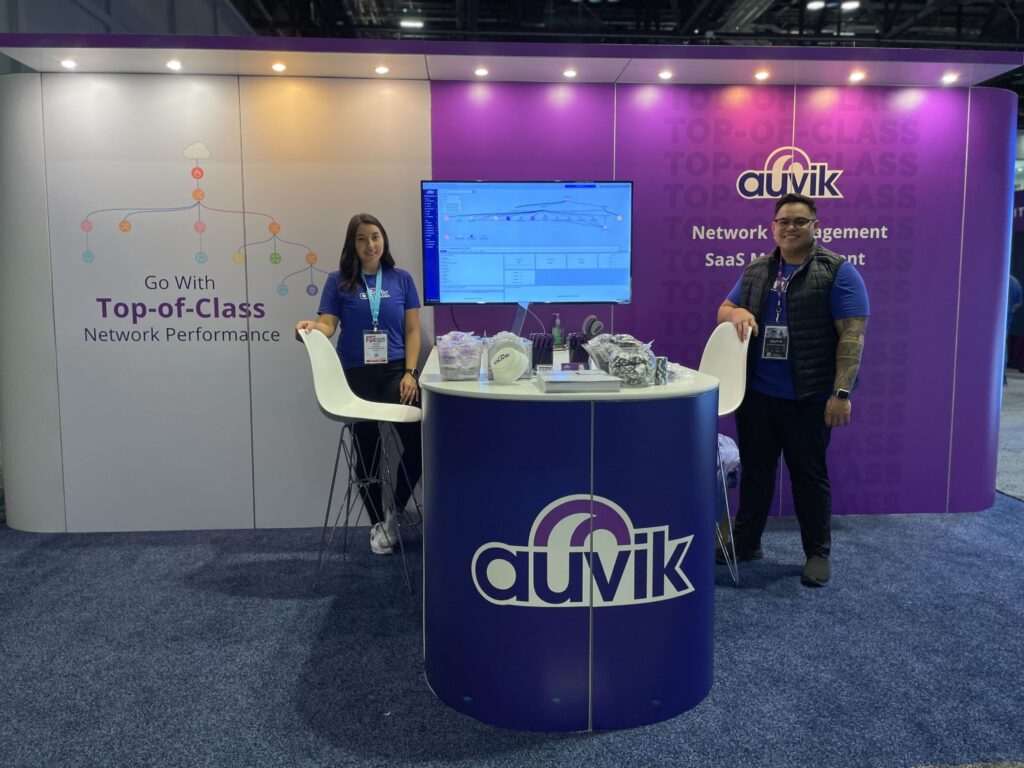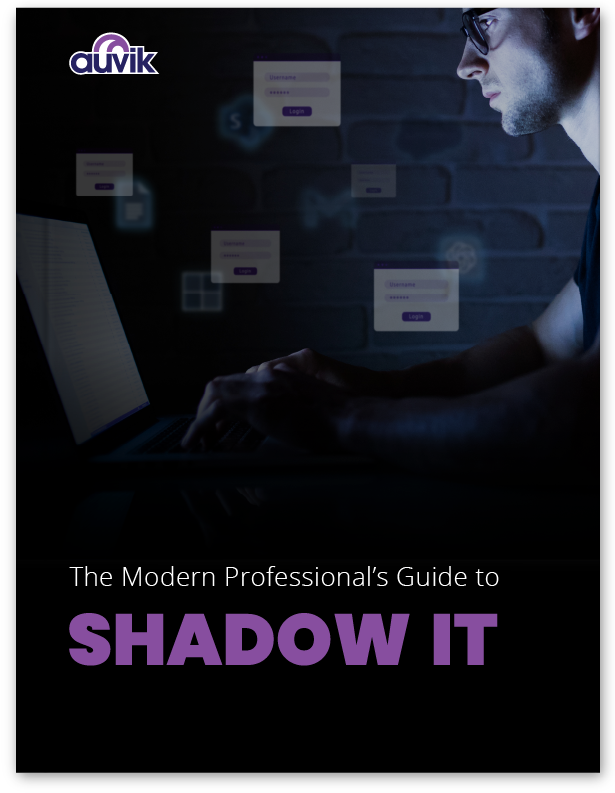In the IT industry, MSP (Managed Service Provider) conferences serve as a hub for collaboration, innovation, and learning among professionals. These must-attend events are so much more than your average corporate convention—they are rich with opportunities to discover new technologies, learn about emerging best practices, make lasting connections, and return with valuable insights on creating a future proof business.
Attending a MSP conference is an investment in both the professional development of your team and in marketing your business—a win-win from our perspective. But like any business initiative, it’s important to prepare ahead of time so you can maximize the value of your investment.
In this article, we’ll provide practical tips to help you make the most out of attending MSP conferences, ensuring you return with more than just the memories.
We’ll share insightful MSP conference tips, including:
- Choosing the right MSP conferences to attend
- Preparing for the MSP conference
- Optimizing your time at the MSP conference
- Creating a post-conference action plan
Let’s dive in.
💡Pro tip: Looking for more general IT conferences instead of specifically MSP events? We’ve got an article for that.
See Auvik in Action on Your Network
Deploy Auvik and monitor as many sites and devices as you like in this 14-day free trial.
Choosing the right MSP conferences to attend
Whether you’re an IT professional, vendor, or MSP, how can you decide which MSP conferences are worth attending?
Start with a goal
Before you can select your events, you’ll want to begin with clear objectives. Understanding what you’re aiming to achieve—whether it’s learning about new technologies and approaches to problem solving, networking, or meeting new vendors—will help you to be more intentional about your choices.
Understand your ideal connection
Next, you’ll want to understand what audience each event is targeting. While well-known conferences like IT Nation Connect are more broadly accessible to IT solution providers, conferences like AWS re:Invent are more tailored to a technical audience like developers. Typically, you can find insights into who the conference caters to along with audience demographics from their previous events by searching for the media or sponsorship kit on the conference website.
Based on the goals you’ve already identified, form a clear understanding of who you want to connect with at events and select the conferences that target an aligned audience.
Explore your options
Now that you know what you’re trying to achieve and who you want to connect with, dive into our learnings on the best MSP conferences to keep on your radar. Identify the events that align with your objectives and create an annual conference calendar so you have plenty of time to prepare in advance.
Here’s what to look for:
- When and where the conference is held
- Who the intended target audience is
- What speakers and vendors are attending
- What training opportunities are available
- When tickets go on sale and registration deadlines
- What costs are associated with attending
- Whether there are speaking or sponsorship opportunities
With this information, start prioritizing your top picks to accurately forecast your budget and timelines for the year ahead. Having this detailed information in hand will help you build a business case and gain approval from your leader, if necessary.
Tips to help you prepare for the MSP conference
It may sound cliché, but the old adage “fail to plan, and plan to fail” rings true when it comes to getting value out of events.
Here are our top MSP conference tips to come prepared and primed for success.
Set goals for attending
You know that your time is valuable and any time investment you make outside of “business as usual” necessitates a solid return. However, conferences are a great opportunity to learn about the latest and greatest technologies, stay on top of trends in MSP business models, and network with your peers. Keep in mind the goals you set when choosing a specific conference—this will help you plan activities within that event accordingly and stay focused once you’re here.
Snag early bird pricing
Most conferences release their tickets in tiers, incentivizing attendees to purchase early on. Once you’ve selected your events, create a calendar reminder for the ticket release date so you can book early and benefit from early bird pricing. If you’re not able to purchase early, ensure you track registration deadlines so you don’t miss out on the event entirely.
It’s helpful to know that event sponsors often receive registration discounts or vendor-exclusive tickets. If you have a relationship with any of the show sponsors, consider asking if they’re willing to share those perks with you and your team—a great way to keep costs down!
Plan travel and accommodation
Book your travel and accommodation well in advance. This not only saves costs, but also ensures you have the opportunity to stay close to the conference venue for convenience, which can make all the difference in being fully present. Some conferences will offer discounts for vehicle rentals or hotel room blocks, so make sure to check the conference guide and take advantage of those perks.
In terms of travel logistics, plan to arrive the day before the conference begins so you can get settled in advance and potentially have some time for more relaxed networking. If you’re flying to the conference location, make sure your flight time isn’t too late in the day so you can get a good night’s rest on arrival. Avoid booking your departing flight too early in the morning, leaving you time to rest and recover after a long few days.
Create your conference schedule
During MSP conferences, your calendar is key. Here’s a step-by-step approach to optimizing your time and developing a clear action plan:
- Review the conference schedule — Research which keynotes and workshops best align with your objectives and add those to your calendar. If there are specific speakers you’d like to connect with one-on-one, send them a note before the conference begins to see if you can schedule a coffee sometime during the duration of your stay.
- Review the vendor list — Take note of which vendors are exhibiting and schedule meetings to connect with the companies that align with your objectives. For example, if it’s a business priority to establish a relationship with a new security partner this year, note the security-specific vendors in attendance that you want to establish rapport with. Make a plan to meet between sessions or after hours to connect and form a real relationship.
- Review the attendee list — Most MSP conferences today provide access to a mobile app with a list of attendees for networking purposes. Prior to the event, browse the app and note anyone in particular you’d like to connect with. Once again, schedule meetings ahead of time to ensure you have the chance to connect.
Mentally and physically prepare
When it comes to endurance, MSP conferences are no joke! If you’re truly taking advantage of everything a conference has to offer, you could be out and about from sunrise to sunset.
Here are a few quick tips to get in the zone pre-conference:
- Hydrate and eat nutritious meals
- Take your vitamins and supplements
- Get plenty of sleep so you’re well rested
- Block your calendar so you can be fully present
- Pack comfortable clothing and shoes
Tips for during the MSP conference
Conferences typically run from two to three days, and there are plenty of activities to pack into that small amount of time. Here are our top MSP conference tips to help you do it all (and then some).
Be present in speaking sessions

To fully immerse yourself in all there is to learn, prepare for your conference keynotes and workshops in advance. Before you attend, review the agenda and brainstorm potential questions you may have for the speaker that align with your business objectives.
During the session, engage by taking detailed notes and participating in discussion periods. This not only deepens your understanding but ensures you’ll be able to apply your insights more effectively back at work. For example, if you’re attending a session about how AI is impacting IT departments, note learnings you can take back to your team, and ask questions about how businesses like yours are navigating this new wave of technology in real time.
If two speakers you want to see happen to be presenting at the same time, try asking a colleague to attend the concurrent session. If this isn’t an option, try connecting with someone who attended the alternate session and asking for a summary of their notes. Your peers are often willing to help!
Balance networking and learning
With hundreds or potentially thousands of attendees, it’s important to be intentional with your networking. Create a list of people you want to connect with and carve out the time to do so. A good rule of thumb is to split up your networking time into thirds: with peers, with thought leaders, and with vendors. Balance your time between these, ensuring you attend key sessions while also exploring new technologies in the exhibition hall.
After-hours activities are crucial for building lasting relationships at conferences. This is where you truly connect with peers and thought leaders, outside the formal setting of the conference hall. Most events will have pre-planned activities to attend, so take full advantage by scheduling those in advance.
Make the most of vendor interactions

Do your due diligence when evaluating a conference exhibitor as a potential vendor. To make the most of your time together, ask meaningful questions, get an in-person demo, or learn about how businesses like yours are using their services. Remember to diversify your time and not to focus solely on the big booths. Often, the smaller vendors are the most innovative!
Avoid running yourself down
Based on personal experience, here are some tried and true tips to stay energized during an MSP conference:
- Don’t overbook your schedule
- Avoid staying up too late during the event
- Spend your time at the conference, not exploring the city
- Stay hydrated by drinking plenty of water
- Don’t eat too many appetizers or fast foods
Tips for after the MSP conference
Our MSP conference tips don’t simply stop at the end of your event—they carry through to a detailed post-event action plan! You may take a few days away from your regular responsibilities to attend the conference, so when you get home, resist the urge to dive right back into your routine. Instead, be intentional about setting time aside to follow up on your learnings and new connections.
Follow up with connections the right way
As tempting as it may be to rush reaching out to new connections, remember that they’ve also taken time away from work and need to catch up. You can connect on LinkedIn as a friendly hello, but give them a few days before sending a formal follow up.
When you send a follow-up note, ensure you’re bringing value to the conversation and establishing a clear objective. For example, if you’ve connected with a number of potential security partners, you might request a demo of their product as a next step. Be specific about what you’re looking to achieve if you book a conversation and clear about next steps.
Implement your knowledge and insights
It’s likely that you learned about several exciting innovations at the MSP conference—but be cautious of “shiny object syndrome.” If an initiative doesn’t align with your business objectives, put it on the back burner. A good rule of thumb is to choose the top three most relevant learnings and create an action plan for implementing them over a period of time, rather than all at once.
Share insights with your team
It’s important to share your learnings with your team, but to do so in a structured manner. For example, you could distill your top three learnings into an engaging presentation deck and share it at your next roundtable meeting.
Remember that your team hasn’t been immersed in the same conversations that you have. Avoid overwhelming them with change by intentionally choosing key insights to share and discussing how they relate back to your business. When the time is right, share your action plan for applying these insights to the business over time.
Follow up with vendors
It’s likely that you’ll be inundated with connection requests from vendors after the event. If that’s the case, remember to be transparent about your needs and don’t be afraid to say no. Prioritize connection requests that align with your objectives so you can make the most of your time.
Track success to justify future attendance
Throughout the year, make sure to track the impact of the changes you implement post-conference. See if the conference provides tips or even templates for putting learnings into place and measuring their results. This will help justify your attendance at future events and show tangible benefits to your organization.
Put these MSP conference tips to practice
MSP conferences are more than just events—they’re opportunities for growth, learning, and building meaningful relationships in the IT industry. Whether you’re looking to reduce MSP costs, streamline your network management, or improve efficiency to better meet your MSP SLAs, conferences are an invaluable learning tool to help you achieve your business goals. Not only will you hear from the industry’s top innovators, you’ll connect with peers that are doing things differently. Ultimately, you’ll come back to your business with fresh ideas and insights that will propel you forward—and to us, that’s priceless.

Try Auvik SaaS Management now
Take the first step in reclaiming control over your SaaS environment.






Leave a Reply